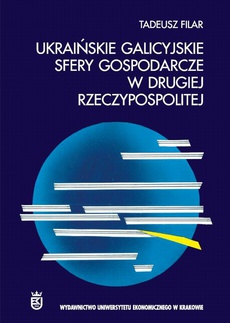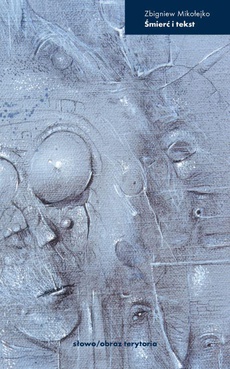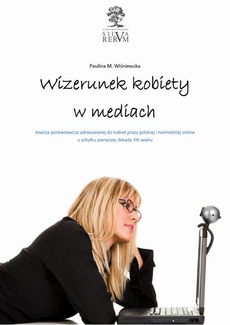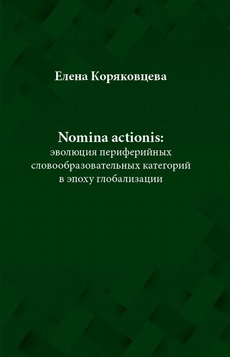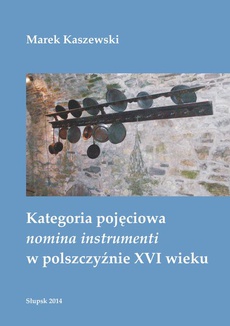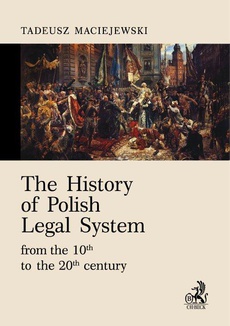POLECAMY
Nomina Agentis in the language of Shakespearean drama
Autor:
Wydawca:
Format:
pdf, ibuk
W trzecim tomie Szkiców o antyku, zatytułowanym Hermeneutyka wina, kierujemy uwagę na nieustanną obecność wina w kulturze sródziemnomorskiej. W poszczególnych artykułach publikacji pragniemy przybliżyć rozmaite aspekty wina oraz ich związek z konkretnym miejscem i czasem. Zamieszczone artykuły mają charakter interdyscyplinarny i przyczynią się do refleksji nad fenomenem wina jako zjawiska bardziej złożonego od literatury. Hermeneutyka wina jest również wyrazem szacunku oraz sympatii dla Profesora Mariana Szarmacha i wyraża wdzięczność za Jego wielkoduszność, której doświadczamy w Katedrze Filologii Klasycznej Uniwersytetu Śląskiego w Katowicach i nie tylko.
| Rok wydania | 2016 |
|---|---|
| Liczba stron | 158 |
| Kategoria | Historia społeczna |
| Wydawca | Uniwersytet Śląski |
| ISBN-13 | 978-83-8012-940-5 |
| Numer wydania | 1 |
| Język publikacji | polski |
| Informacja o sprzedawcy | ePWN sp. z o.o. |
Ciekawe propozycje
Spis treści
| Table of contents | |
| Abbreviations and symbols / | 9 |
| Introduction / | 11 |
| Chapter 1: Nominalisations in selected linguistic theories / | 15 |
| 1.1 The place of nominalisations in grammar / | 15 |
| 1.2 Nominalisations in Structural Linguistics / | 17 |
| 1.3 Nominalisations in Transformational-Generative Grammar (TGG) / | 18 |
| 1.4 Nominalisations in Generative Semantics (GS) / | 25 |
| 1.5 Nominalisations in Cognitive Linguistics / | 27 |
| 1.6 Nominalisations in the approaches based on the theory of selectional restrictions / | 29 |
| 1.7 Conclusion / | 32 |
| Chapter 2: The problem of productivity in word-formation / | 33 |
| 2.1 The notion of productivity in linguistics / | 33 |
| 2.2 Productivity as frequency versus productivity as potentiality / | 34 |
| 2.3 Productivity with relation to language levels / | 38 |
| 2.4 Degrees of productivity / | 38 |
| 2.5 Restrictions on productivity / | 39 |
| 2.5.1 Linguistic r estrictions / | 39 |
| 2.5.2 Extralinguistic restrictions on productivity / | 40 |
| 2.6 Measuring productivity / | 42 |
| 2.6.1 Measures based on type frequency / | 42 |
| 2.6.2 Measures based on token frequency / | 43 |
| 2.7 Productivity versus creativity / | 45 |
| 2.8 Prerequisites for productivity / | 45 |
| 2.9 The problem of estimating productivity in historical language studies / | 47 |
| 2.10 Conclusion / | 48 |
| Chapter 3: Nomina Agentis versus Nomina Instrumenti: The fuzziness of categorial borders / | 51 |
| 3.1 Formal and semantic correspondence between agents and instruments / | 51 |
| 3.2 Attempts at isolating the categorial features for agents and instruments / | 52 |
| 3.3 Agents and instruments in the light of the theory of categorisation / | 55 |
| 3.4 Categories and categorisation in Cognitive Linguistics / | 58 |
| 3.5 Conclusion / | 60 |
| Chapter 4: Semantic, syntactic, and morphological properties of agent nouns / | 63 |
| 4.1 Agents versus locatives / | 63 |
| 4.2 Agents versus experiencers / | 64 |
| 4.3 Agency and C ausality / | 66 |
| 4.4 Other semantic features of agents / | 67 |
| 4.5 Semantic relations between an agent noun and its motivating verbal base: Habitual versus actual agents / | 68 |
| 4.6 Denominal Nomina Agentis / | 70 |
| 4.7 Methods of deriving Nomina Agentis in Modern English / | 73 |
| 4.7.1 The suffix -ant/-ent / | 73 |
| 4.7.2 The suffix -ar / | 74 |
| 4.7.3 The suffix -ee / | 75 |
| 4.7.4 The suffix -er / | 76 |
| 4.7.5 The suffix -ess / | 80 |
| 4.7.6 The suffix -ic/-ician / | 80 |
| 4.7.7 The suffix -ist / | 81 |
| 4.7.8 The suffix -or / | 81 |
| 4.7.9 The suffix -ster / | 83 |
| 4.7.10 The suffix -Ø (conversion) / | 83 |
| 4.8 Conclusion / | 84 |
| Chapter 5: Early Modern English ― linguistic and cultural background / | 85 |
| 5.1 External history and its influence on language / | 85 |
| 5.2 Attitudes to language / | 86 |
| 5.3 Vocabulary and word-formation / | 86 |
| 5.4 Semantic changes / | 87 |
| 5.5 Conclusion / | 95 |
| Chapter 6: Agent nouns in Shakespeare’s plays / | 97 |
| 6.1 Source material and data collection / | 97 |
| 6.2 Definition and classification of agent nouns / | 98 |
| 6.3 General corpus characteristics / | 99 |
| 6.4a Unanalysable agent nouns / | 99 |
| 6.4b Semantic analysis / | 100 |
| 6.5 Analysable a gent n ouns / | 104 |
| 6.5.1 The suffix -er / | 105 |
| 6.5.1.1 Formal a nalysis / | 105 |
| 6.5.1.2 Semantic a nalysis / | 108 |
| 6.5.1.2.1 Deverbal a gent n ouns / | 108 |
| 6.5.1.2.2 Denominal agent nouns / | 110 |
| 6.5.1.3 Shakespeare’s neosemanticisms in -er / | 111 |
| 6.5.1.4 Shakespeare’s agentive neologisms in -er / | 112 |
| 6.5.1.4.1 Shakespeare’s agentive neologisms in -er: Semantics / | 113 |
| 6.5.1.4.2 Shakespeare’s agentive neologisms in -er: Institutionalisation / | 114 |
| 6.5.2 The suffix -or / | 114 |
| 6.5.2.1 Formal a nalysis / | 115 |
| 6.5.2.2 Semantic analysis / | 116 |
| 6.5.3 The semi-suffix -man / | 117 |
| 6.5.3.1 Formal a nalysis / | 118 |
| 6.5.3.2 Semantic analysis / | 119 |
| 6.5.4 The suffix -ess / | 121 |
| 6.5.4.1 Formal a nalysis / | 121 |
| 6.5.4.2 Semantic analysis / | 122 |
| 6.5.5 The suffix -ant / | 123 |
| 6.5.5.1 Formal a nalysis / | 123 |
| 6.5.5.2 Semantic analysis / | 124 |
| 6.5.6 The suffix -ist / | 125 |
| 6.5.6.1 Formal a nalysis / | 125 |
| 6.5.6.2 Semantic analysis / | 126 |
| 6.5.7 The suffix -ian/-ician / | 127 |
| 6.5.7.1 Formal analysis / | 128 |
| 6.5.7.2 Semantic a nalysis / | 128 |
| 6.5.8 The suffix -ster / | 129 |
| 6.5.8.1 Formal a nalysis / | 129 |
| 6.5.8.2 Semantic analysis / | 130 |
| 6.5.9 The suffix -eer / | 131 |
| 6.5.9.1 Formal a nalysis / | 131 |
| 6.5.9.2 Semantic a nalysis / | 131 |
| 6.5.10 The suffix -ar / | 132 |
| 6.6 Conclusion / | 132 |
| Conclusions / | 137 |
| Bibliography / | 139 |
| Index of subjects / | 147 |
| Index of scholars / | 149 |
| Appendix: Shakespeare’s agentive neologisms / | 151 |
| Streszczenie / | 153 |
| Zusammenfassung / | 155 |





